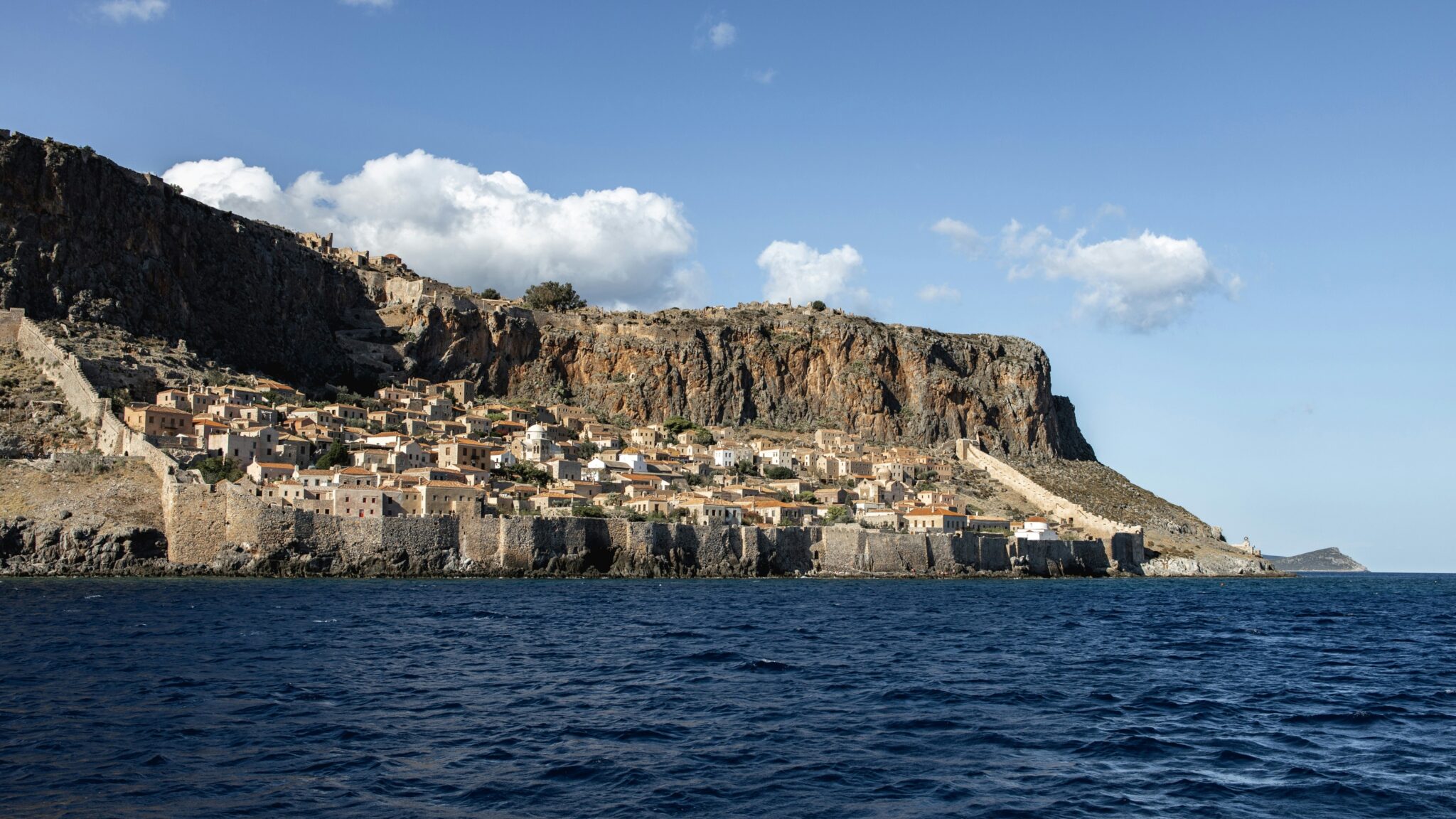Lasithi offers wine enthusiasts two distinct routes to explore its visiting wineries. Home to Greece’s oldest vineyard tradition, Crete’s winemaking history dates back to Minoan times, with evidence confirming viticulture and winemaking as significant Minoan activities. The earliest evidence of viticulture in Greece—grape seeds, stalks, and skins—was discovered in Myrtos, Ierapetra, preserved in Bronze Age Aegean settlement layers dating to 2600-2000 BC. Today, Lasithi’s vineyards comprise one-tenth of Crete’s total wine production, with wineries concentrated in the eastern regions of Sitia, Lefki, and Itanos, and recent expansions reaching south to Makrygialos. These areas form the region’s two main wine routes visitors can explore.
The region’s second-largest vineyard sprawls across the Ziros plateau at an average altitude of 590 meters, thriving on land once considered barren until transformed through intensive human labor. The terroir features limestone and schist soils, with higher concentrations of sand and clay throughout the plateau areas. While older vines follow traditional bush-training methods, modern plantings adopt linear systems. Red varieties historically dominated this area, leading to the 1971 establishment of OPAP Sitia designation for both dry and sweet red wines.
The Varieties
Liatiko remains Lasithi’s flagship red variety, alongside the widespread Voidomatero. Liatiko produces distinctive wines characterized by high alcohol content, moderate acidity, gentle tannins, and light red color, with the finest examples offering elegant, spicy characteristics. The region also cultivates Mandilaria, Kotsifali, Syrah, and Grenache. Among white varieties, Thrapsathiri stands as the region’s specialty, while Assyrtiko, Vilana, Muscat of Spina, Plyto, Dafni, and Chardonnay all contribute to the production of exceptional sweet and dry wines. Vilana, a more recent addition to the region’s portfolio, pairs with Thrapsathiri in producing white OPAP Sitia wines. The PDO Sitia zone, besides being the largest, is recognized as Lasithi’s highest-quality viticultural area, producing both dry and sweet wines, red and white, from Liatiko, Mandilaria, Vilana, and Thrapsathiri.
The establishment of PDO Malvasia Sitia in 2011 marked another milestone in the region’s wine history. This designation produces outstanding white sweet wines through either sun-drying grapes or fortification with spirit addition. The approved varieties for Malvasia Sitia include Assyrtiko, Athiri, Thrapsathiri, Muscat of Spina, Malvasia di Candia Aromatica, and white-vinified Liatiko.
Lasithi’s climate and geography create ideal conditions for organic viticulture. The region enjoys a dry, warm climate, with the last rains typically falling in April. Vineyards flourish at elevations between 250 and 650 meters, where cooling, beneficial sea breezes moderate high temperatures and provide vital relief to the vines.







